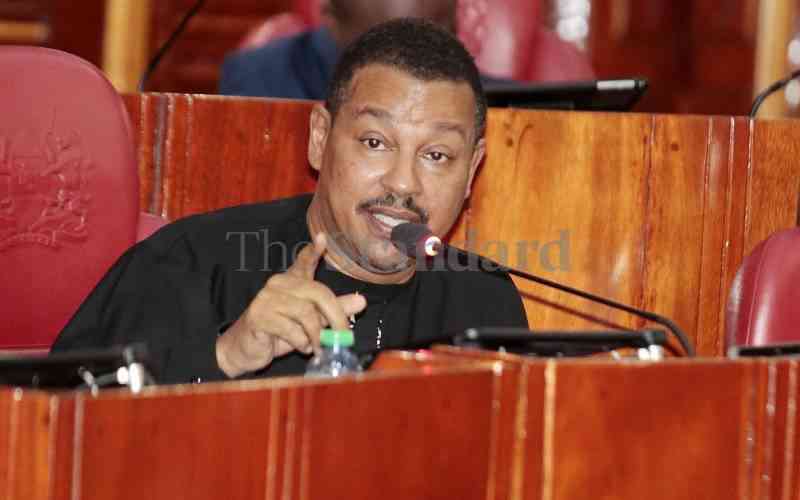By James Anyanzwa
Kenya Power is inching closer to setting up a local transformer-making plant.
Last week, the power distributor invited firms to bid for tenders for the construction of the plant.
The latest is part of a string of initiatives that the electricity distributor firm has adopted to address the erratic electricity supply and hopefully bring the cost of electricity down.
Other programmes underway and which are to be implemented within the 2010/11 to 2015/16 period include installation of more efficient load switching equipment and a complete migration from oil type to dry type transformers that are less prone to vandalism.
Kenya Power is also seeking to install underground electricity lines to reduce electricity line breakdowns in urban centres as well as enhance public safety.
The State-run Corporation also hopes to automate electricity network through extension of new technologies such as smart grid and adopt a distribution master plan for comprehensive improvement to the entire distribution network.
Eng Joseph Njoroge, the company’s managing director and chief executive said feasibility studies for the joint venture transformer factory are on course.
"We are exploring the possibility of setting up this factory locally," said Njoroge.
Njoroge was speaking in Nairobi at an event in which the company adopted a new name and unveiled a fresh look in line with its strategic plan and Vision 2030.
PLANNED TRANSMISSION
 |
Kenya Power often blames frequent power cuts to vandalism of transformers. They have since moved to replace oil-based transformers to discourage vandals. [Photo: FILE/STANDARD] |
Kenya Power hopes to provide additional energy transmission capacity to meet load growth across the country with its development plan entailing construction of 38 transmission projects totalling 3,697km and 2,421MVA of substation capacity.
The estimated total cost of committed projects in the planned period is fixed at Sh43.3 billion ($482 million) while other planned transmission projects will require approximately Sh78.8 billion ($876 million).
However, Kenya Electricity Transmission Company (KETRACO), a wholly Government-owned firm, will develop transmission projects.
Stay informed. Subscribe to our newsletter
Among KETRACO’s committed transmission projects include Mombasa-Nairobi 400kV double circuit, Mumias-Rangala 132kV single circuit, Sangoro-Sondu 132kV, Kindaruma-Mwingi-Garissa and Eldoret-Kitale.
Others are Kenya (Lessos)-Uganda (Tororo) 220 kV single circuit, Rabai-Malindi-Garsen-Lamu 220kV single circuit, Reactive Compensation phase 1 of Nairobi Transmission system and an upgrade of Embakasi from 180MVA to 270MVA.
The planned regional interconnection transmission line projects, which are to be implemented at an approximate cost of $876 million include Ethiopia (Wolayta Sodo)-(Suswa) 500kV HVDC line inter-connector, Suswa-Isinya 400kV double circuit and (Isinya)-(Singida) 400kV interconnector.
The Government says the energy sub-sector requires more than Sh400 billion worth of investment in new generation capacity to meet the growing power demand in the country over the next five years.
The demand for electricity in the country has persistently risen prompted by accelerated new connections of ordinary and industrial consumers as the economy expands.
So far, 800,000 new customers have been connected as part of the first medium term plan for Vision 2030, which envisages the connection of one million new customers between 2008 and 2012.
It is feared that the demand could run out of control and outstrip supply owing to the Government’s commitment to connect up to 40 per cent of the population to electricity by 2020 from the current 29 per cent and all Kenyans by 2030.
Electricity demand has grown at an annual average rate of 5.3 per cent over the past five years and is projected to accelerate to over 10 per cent per year due to the implementation of the Vision 2030 projects.
According to statistics from Kenya Power, the country’s installed power capacity stood at 1599.9MW by May this year against available generation capacity of 1359.2 MW while system peak demand stands at 1,191.03MW.
"We shall continue to raise funds locally and to access that facility from the governments of multinational lenders," said Njoroge.
In the 2011/2012 budget, Treasury allocated Sh15.6 billion to the expansion of electricity transmission system, Sh16 billion towards geothermal development and Sh5.6 billion towards rural electrification programmes.
Last year, Kenya Power raised Sh9.5 billion through a rights issue, which was oversubscribed by Sh302 million.
RENOUNCE RIGHTS
The company offered a total of 488,630,245 new shares to its existing shareholders with a view of generating additional capital to fund the refurbishment and development of its power delivery systems.
The Rights Issue, which was priced at a discounted rate of Sh19.50 per share, saw the Government renounce its rights, thereby setting its shareholding in the firm at 50.1 per cent.
The issue, which ran from December 1 to December 22, last year marked the final phase of Kenya Power’s restructuring programme meant to clean up the company’s balance sheet and improve its credit rating.
The restructuring process, which was designed to attract cheap funding for the company’s expansion programmes, also involved the conversion of 795 million redeemable non-cumulative preference shares held by the Government into new ordinary shares followed by a share split.
The additional shares were offered in the ratio of 20 shares for every 51 held.
But this was after the split of shares such that every one ordinary share of Sh20 each was split into eight (8) ordinary shares of Sh2.50 each.
The restructuring of the Kenya Power’s balance sheet was meant to ease pressure on the company’s payment of a fixed preferential dividend on the shares, deepen capacity of the energy sector, enable the company to obtain an additional risk equity capital and create an equitable position among ordinary and preference shareholders.
 The Standard Group Plc is a
multi-media organization with investments in media platforms spanning newspaper
print operations, television, radio broadcasting, digital and online services. The
Standard Group is recognized as a leading multi-media house in Kenya with a key
influence in matters of national and international interest.
The Standard Group Plc is a
multi-media organization with investments in media platforms spanning newspaper
print operations, television, radio broadcasting, digital and online services. The
Standard Group is recognized as a leading multi-media house in Kenya with a key
influence in matters of national and international interest.
 The Standard Group Plc is a
multi-media organization with investments in media platforms spanning newspaper
print operations, television, radio broadcasting, digital and online services. The
Standard Group is recognized as a leading multi-media house in Kenya with a key
influence in matters of national and international interest.
The Standard Group Plc is a
multi-media organization with investments in media platforms spanning newspaper
print operations, television, radio broadcasting, digital and online services. The
Standard Group is recognized as a leading multi-media house in Kenya with a key
influence in matters of national and international interest.








